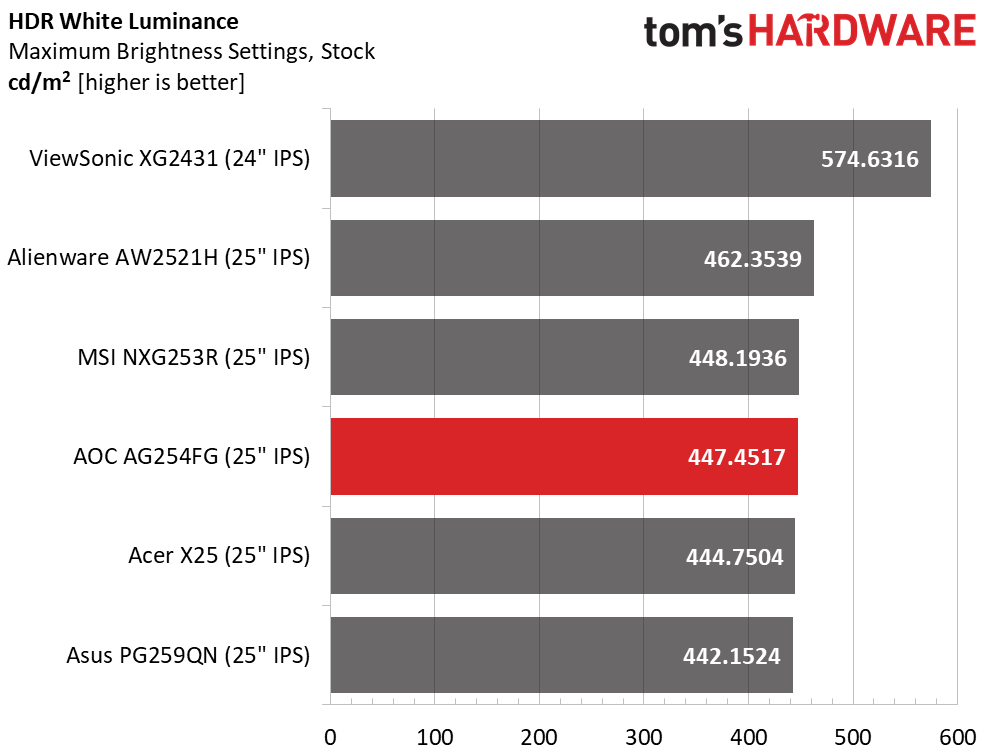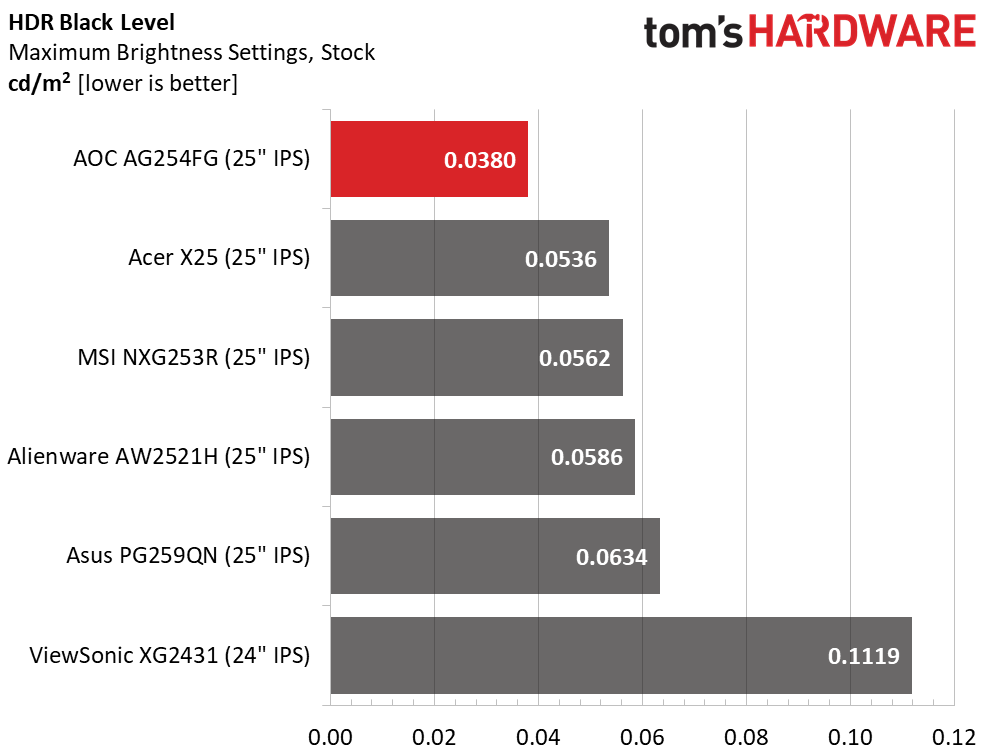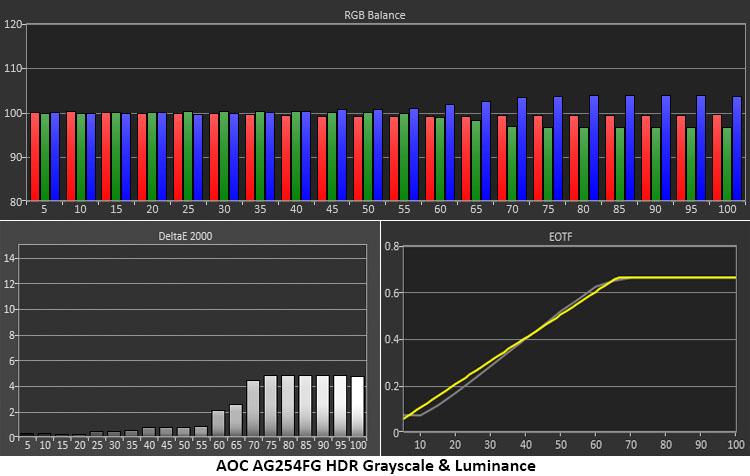Why you can trust Tom's Hardware
Our HDR benchmarking uses Portrait Displays’ Calman software. To learn about our HDR testing, see our breakdown of how we test PC monitors.
The AG254FG switches automatically to HDR mode when an HDR10 signal is present. You can still change the picture presets, but no calibration is possible. Brightness is fixed, but you can turn off the variable backlight if you wish.
HDR Brightness and Contrast



The AG254FG easily tops the VESA DisplayHDR 400 standard with over 447 nits peak output. Variable Backlight is turned on by default in HDR mode and you’ll want to leave it on for maximum dynamic range. With the lowest black level here, it hits a best-in-class 11,767:1 contrast ratio. No detail is obscured in either highlight or shadow areas. There is an occasional shifting of the brightness level when content changes quickly, but it is not a distraction during gameplay. Of all the 360 Hz screens I’ve reviewed, this one has the best HDR contrast.
Grayscale, EOTF and Color


The AG254FG’s excellent SDR color accuracy is repeated in HDR mode. The grayscale run shows a bit of coolness at the top, but I could not see that in content. The EOTF tracks perfectly, ensuring full detail rendering at every brightness level from the darkest to the brightest parts of the image. The tone-map transition happens at around 65% which is as expected given the AOC’s peak output.
Most HDR content is mastered with either DCI-P3 or Rec.2020 color. The AG254FG tops out at sRGB but manages to differentiate between Rec.709 (same as sRGB) and DCI-P3 in my tests. This means HDR content will show more saturation in all but the brightest scenery. That encompasses most material, so only the most saturated hues will be missing. This is the best one can hope for when displaying HDR content on an sRGB monitor. Though I wish the gamut were larger, it is as accurate as it can be.
Get Tom's Hardware's best news and in-depth reviews, straight to your inbox.

Christian Eberle is a Contributing Editor for Tom's Hardware US. He's a veteran reviewer of A/V equipment, specializing in monitors. Christian began his obsession with tech when he built his first PC in 1991, a 286 running DOS 3.0 at a blazing 12MHz. In 2006, he undertook training from the Imaging Science Foundation in video calibration and testing and thus started a passion for precise imaging that persists to this day. He is also a professional musician with a degree from the New England Conservatory as a classical bassoonist which he used to good effect as a performer with the West Point Army Band from 1987 to 2013. He enjoys watching movies and listening to high-end audio in his custom-built home theater and can be seen riding trails near his home on a race-ready ICE VTX recumbent trike. Christian enjoys the endless summer in Florida where he lives with his wife and Chihuahua and plays with orchestras around the state.
-
Sleepy_Hollowed Wow, thank you for the review, what an impressive monitor.Reply
I'd say it's almost perfect, I'd prefer it to be ultra-wide 1080p, but 1080p works just fine for high refresh rate gaming/rendering.
I don't think I can play anything at max resolution at that refresh rate without DLSS or FSR and some tweaking even at 1080p, but it'd be interesting revisiting games at that refresh rate.